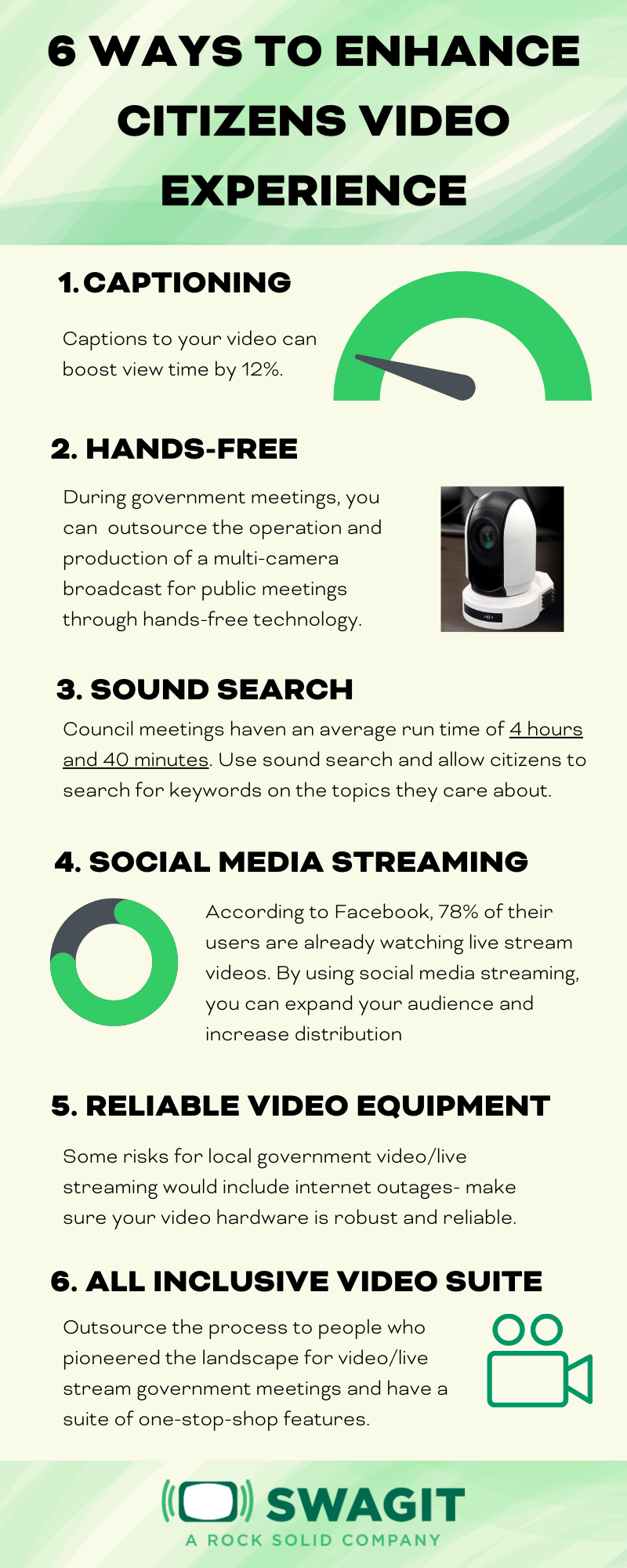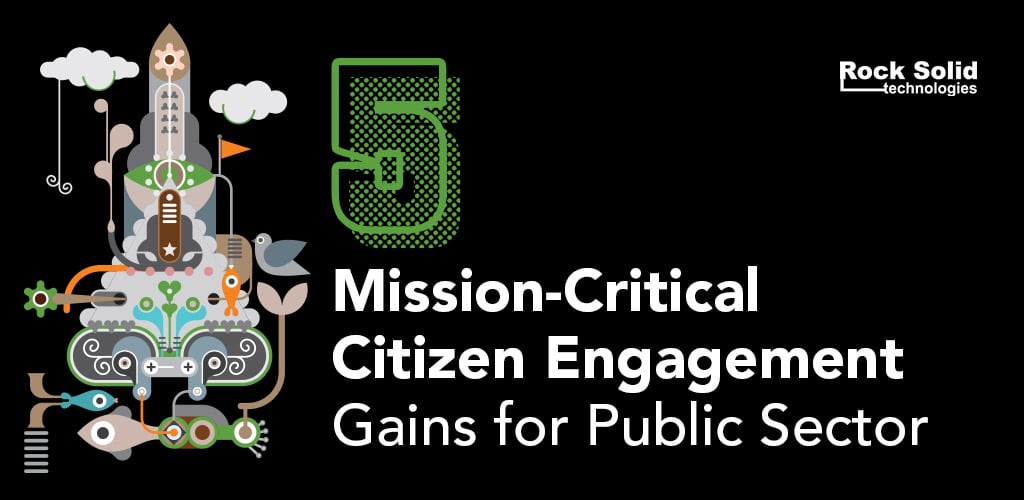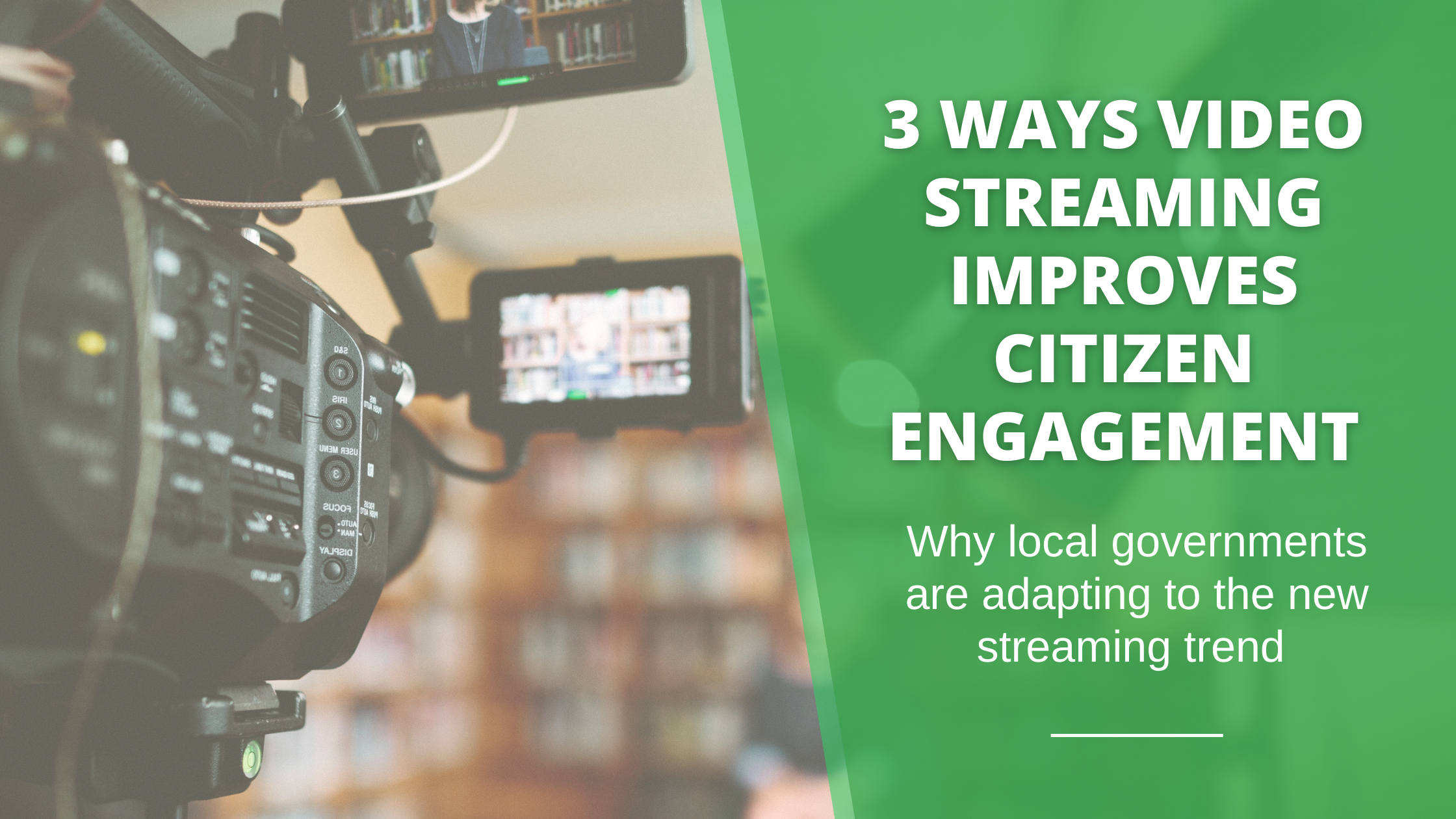We all want to exceed at what we do, and for local governments that means finding new advanced ways to serve their communities. Throughout the past couple of years, we’ve found trends in data that suggest citizens have growing demands for communication with their local government. This means local governments have to keep up with trending citizen engagement tools and technologies to serve the masses.
In our previous blog, we uncovered one of the up-and-coming tech trends for local governments and constituent engagement: video/live streaming for meetings. It seems like a no-brainer that after the pandemic, citizens became more accustomed to a digital landscape that includes digesting information from smartphones and laptops via video/live stream.
We know video/live streaming serves as an advantage to city staff and constituents alike for reasons like transparency, ease of consumption, tech advancement, etc. So- what would be the next step in elevating your citizen's video experience? Let’s begin with a trend that takes video/live streaming one step further-captioning.
1. Captioning
Video captions are a new trend for videos in general, they provide clarity on the words being spoken and help viewers understand the content being presented. We know that data suggests users prefer watching videos with captioning and experts say captions to your video can boost view time by 12%.
.png?width=485&name=Blog%20Data%20Graphic%20(3).png) For local governments, there’s another lens to look at captioning, which involves ADA compliance. Offering captioning for live streaming can help viewers who may be deaf or reduced hearing. The leading local government video providers offer real-time captioning for live programming, and post-meeting captioning to help citizens consume content.
For local governments, there’s another lens to look at captioning, which involves ADA compliance. Offering captioning for live streaming can help viewers who may be deaf or reduced hearing. The leading local government video providers offer real-time captioning for live programming, and post-meeting captioning to help citizens consume content.
Using captioning for video/live streaming isn’t just advantageous for tech trends, it also serves as a more inclusive platform for citizens and city staff alike.
2. Hands-Free
As we before mentioned, city clerks have many responsibilities leading up to, during, and after council meetings. What if there were a way to eliminate processes and automate them to be more efficient? That’s where hands-free video production comes in, and the ability to have processes handled remotely. Cutting-edge vendors provide “hands-free” options. The basis is that there requires no work from city clerks or city staff during the recording process.
Essentially, during council meetings, the meeting would be recorded, live-streamed, and produced by the vendors entirely remotely through hardware called Avior. Imagine having a full-scale video production team operating from anywhere in the world, that’s the beauty of hands-free technology!
The Avior technology provides a package of HD PTZ (Pan, Tilt, and Zoom) cameras, professional video-switching equipment, and associated components that enable any thought leader to fully outsource the operation and production of a multi-camera broadcast for public meetings. Enhanced citizen experience involves enhanced technology.
3. Sound Search
Before we get into transcript search we’re going to offer a protip for future reference, if you press “ctrl + f” or “command f” while you’re browsing a site you’ll be prompted to a search box that allows you to find keywords in a document. (We may or may not have picked up on that trick in undergrad.)
Anyway, let’s get into what any of this has to do with local government meetings and video/live streaming meetings. We know council meetings can be long, with an average run time of 4 hours and 40 minutes. Besides that, council meetings contain various topics that need to be covered, and sitting around for the whole entire meeting can be daunting for the average citizen.
.png?width=284&name=Blog%20Data%20Graphic%20(6).png) The new wave is a transcript search feature, that’s allowed with leading video production software. Essentially, there’s a platform where you can actually search for a keyword you’d like to hear about in a council meeting. For example, let’s say an engaged citizen wants to hear updates about the topic of park regulations, that that’s a service that's most interesting to them. The said citizen can search for that topic in a platform, and be taken to the exact place in the meeting where park regulations were mentioned (If only Netflix had that technology, we could finally search funny quotes from Friends!)
The new wave is a transcript search feature, that’s allowed with leading video production software. Essentially, there’s a platform where you can actually search for a keyword you’d like to hear about in a council meeting. For example, let’s say an engaged citizen wants to hear updates about the topic of park regulations, that that’s a service that's most interesting to them. The said citizen can search for that topic in a platform, and be taken to the exact place in the meeting where park regulations were mentioned (If only Netflix had that technology, we could finally search funny quotes from Friends!)
The obvious advantage of this leading local government video experience is the aspect of time, time for citizens to get to the part of the meeting that they really care about without sitting through hours of information. This feature would elevate citizens' experience and leave them with positive feelings for their community and involvement, and after all, that’s what we’re after in the local government world.
4. Social Media Streaming
According to Facebook, 78% of their users are already watching live-stream videos. Meaning government meetings need to accommodate various social media platforms to reach their audience, and the elevated citizen video experience provides just this. Social media streaming would be integrated to produce videos on platforms like Facebook and YouTube and expand your audience and increase distribution channels.
On Facebook, there’s even a notification setting that sends out to users before the live stream video so that more citizens can get engaged with meetings in real-time.
.png?width=491&name=Blog%20Data%20Graphic%20(5).png)
5. Reliable Video Equipment/Redundancy
We know how important it is to keep recordings of meetings and minutes for local government, it provides transparency and keeps up with FOIA requirements.
The same is true for recorded video meetings, there comes the required equipment to ensure the success of the meeting. The equipment needed would include things like AV hardware, stands for the hardware, etc. The most important part of the equipment pack would be that it works and that it works consistently. Some risks for local government video/live streaming would include internet outages- it’s even more important for local government meetings as the best practice is to live stream meetings to constituents.
.png?width=474&name=Blog%20Data%20Graphic%20(4).png)
We want technology that's dependable, and that has little risk of having a meltdown or technical difficulties when delivering crucial information to citizens. In short, you can’t have an excellent recorded council meeting without excellent equipment.
6. All-Inclusive Video Production Suite
Last not but not least, let’s discuss the benefits of a vendor that “does it all.” When we think of video production for local government meetings it might be easy to defer our efforts to our communication team or public information, but we should rely on industry experts who have years of experience.
Clerks and city staff in general don’t have the time and resources to allocate to top-tier level video production (or if they do, it's going to cost them). For council meetings, video production is the last thing a city clerk wants to think about when preparing information for their constituents. After all, council meetings take a lot of preparation from city staff. From developing minutes, getting the recorded index finalized, preparing discussion topics, revisiting old agenda items, etc.

Video recording is just the base for full local governments- taking one level higher would be video production. Production involves not just the recording of the video, but also aspects that go into the finalization process of video making. Things like editing, recording, captioning, and live streaming on different platforms, are all part of a suite of best practices for local government videos. City clerks and staff have so many responsibilities- why not outsource the process to people who pioneered the landscape for video/live stream government meetings?
Bottom Line: Local government thought-leaders have many responsibilities to serve constituents and city staff, and anyway that can cut long processes into something simple is advantageous for bridging the gap between city staff and their constituents. So, what are you waiting for? Elevate your citizen's video experience and talk to the experts today.



